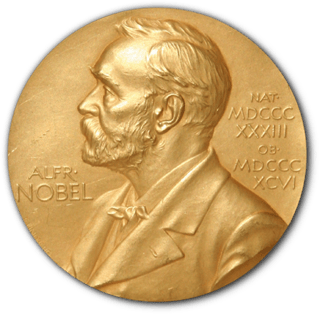To call him Sweden’s most beloved Renaissance man would be something of an understatement. A world-renowned poet, translator, psychologist, and thinker, Tomas Tranströmer dedicated his life’s work in one way or another to the exploration of who we are and why we’re here. Whether through one of his major literary publications or his psychological work at the prestigious Roxtuna Center for juvenile offenders, Tranströmer strived for a deeper understanding of the human condition and the beauty of the routine, rote moments in everyday life.
 Even after a debilitating stroke in 1990, one which left him partially paralyzed on his right side and with limited speech capabilities, Tranströmer continued to write and explore the precious moments in day-to-day existence, and in fact he actually furthered his artistic pursuits by teaching himself to play the piano with only his left hand.
Even after a debilitating stroke in 1990, one which left him partially paralyzed on his right side and with limited speech capabilities, Tranströmer continued to write and explore the precious moments in day-to-day existence, and in fact he actually furthered his artistic pursuits by teaching himself to play the piano with only his left hand.
Tranströmer died in 2015 just before his 84th birthday, but the essence of his life and literary career resonates today. Tranströmer was the recipient of some of the literary world’s most prestigious awards and recognitions, and his work has been translated into roughly 60 languages worldwide.
Given his place in the landscape of Scandinavian—and worldwide—literature, Tranströmer is definitely a poet worth getting to know.
Early Life
Tranströmer was born in 1931 in Stockholm. Not long after his birth, his parents divorced and he spent the majority of his childhood and adolescence with his mother, a school teacher. Education was made a top priority during Tranströmer’s early years, and as such he excelled in elementary and later schooling and eventually attended the prestigious Södra Latin Gymnasium for his secondary education. It was during this time that Tranströmer began to dabble in poetry, history, psychology, and religion.
After finishing at Södra, Tranströmer decided to continue his poetic and psychological studies in Stockholm at Stockholm University, where he began to develop his own thoughts, beliefs, and aesthetics about the state of contemporary Swedish poetry.
Tranströmer reacted strongly to the ostentatious and distancing language and subject matter of modern Swedish poets, and instead was drawn to a more-stripped down, traditional method of verse which emphasized images, form, and structure. His early poems, many of which were published in literary magazines while at Stockholm University, reflected this worldview, and these early publications helped to give Tranströmer confidence in his voice and style.
Major Works
 Tranströmer published his first collection of poems, 17 poems, in 1954 while finishing his studies at Stockholm University. The collection featured a number of previously published poems emblematic of his style and poetic tastes—the rhythm of season and nature, the sense of wonder and routine in everyday life, and the notion of spirituality in the 20th Century.
Tranströmer published his first collection of poems, 17 poems, in 1954 while finishing his studies at Stockholm University. The collection featured a number of previously published poems emblematic of his style and poetic tastes—the rhythm of season and nature, the sense of wonder and routine in everyday life, and the notion of spirituality in the 20th Century.
The collection was met with great acclaim and brisk sales, and critics and fans alike praised Tranströmer for his formal confidence and imaginative metaphors and language. The success of 17 poems helped vault Tranströmer into the mainstream of contemporary Swedish poets, though some of his contemporaries castigated Tranströmer for his hesitance to address Swedish political and cultural issues in his work.
Tranströmer’s other major volumes of poetry include Baltics (1974), which is a long-form poem based loosely on a series of notes from Tranströmer’s grandfather who had worked as a maritime pilot, and For the Living and the Dead (1989). Both of these works saw a shift in Tranströmer’s tone and subject matter away from the slice-of-life concerns to more personal, idiosyncratic, and open or free verse poems that explored the darker side of the human condition.
Tranströmer continued to write and publish following his stroke in 1990, publishing much-lauded Den stora gåtan (The Great Enigma) in 2004 with an English translation following in 2006.
Awards and Honors
If there is an internationally-recognized literary award, there’s a good chance Tomas Tranströmer won it. Considered by many literary organizations and advocacy groups as the most important Scandinavian writer since World War II, Tranströmer was awarded the Neustadt International Prize for Literature in 1990 for his cumulative body of work and contribution to arts and letters across the globe.
Administered by the University of Oklahoma and the international publication World Literature Today, the Neustadt is considered one of the most sought-after literary awards throughout the world and is accompanied by a $50,000 prize. The honor is awarded biennially and often referred to as the "American Nobel Prize."
 Tranströmer was awarded a Nobel Prize in Literature in 2011 after several years of serious consideration—Tranströmer was long thought to be a lock for the award. In honoring him, the Nobel Committee cited Tranströmer’s “condensed, translucent images” that “give us access to reality.” Tranströmer was the first Swedish writer to win a Nobel since 1974 and is considered the most famed Swedish recipient of the prize.
Tranströmer was awarded a Nobel Prize in Literature in 2011 after several years of serious consideration—Tranströmer was long thought to be a lock for the award. In honoring him, the Nobel Committee cited Tranströmer’s “condensed, translucent images” that “give us access to reality.” Tranströmer was the first Swedish writer to win a Nobel since 1974 and is considered the most famed Swedish recipient of the prize.
Later Life and Death
Tranströmer died in March 2015 after complications and battles stemming from his stroke. He continued publishing both individual poems and long-form projects up until his death, though he retired from his psychological work with juveniles and other state institutions several years prior.
His work is still the source of inspiration and influence to a number of contemporary poets, as well as working poets in scores of countries the world over. Tranströmer’s writings continue to sell thousands of copies each year in his native country, and his fascination with the seemingly mundane, natural elements of everyday life ring just as true today—with poetry lovers in Sweden and beyond—as they did more than 50 year ago.
Image source here.








